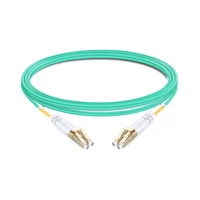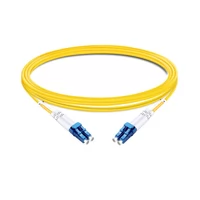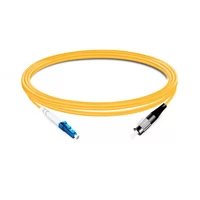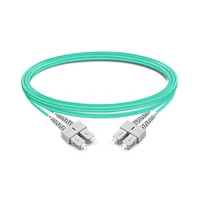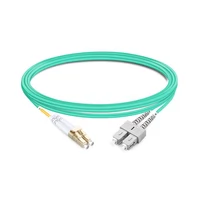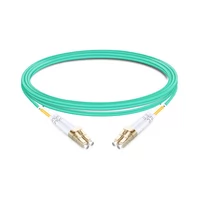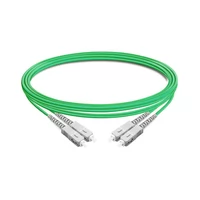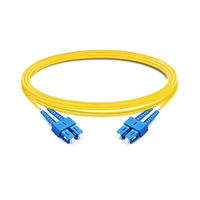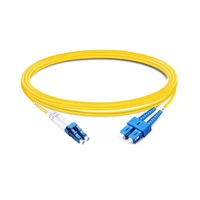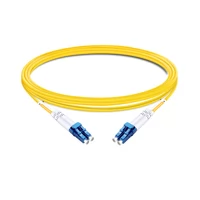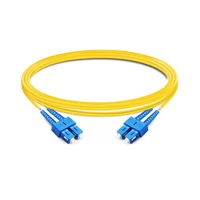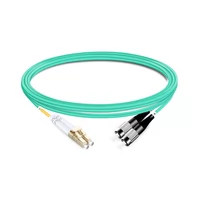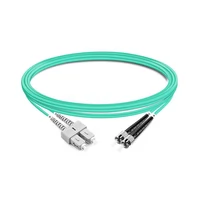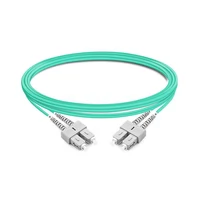What’s this? I believe many people know that this is a fiber optic jumper.
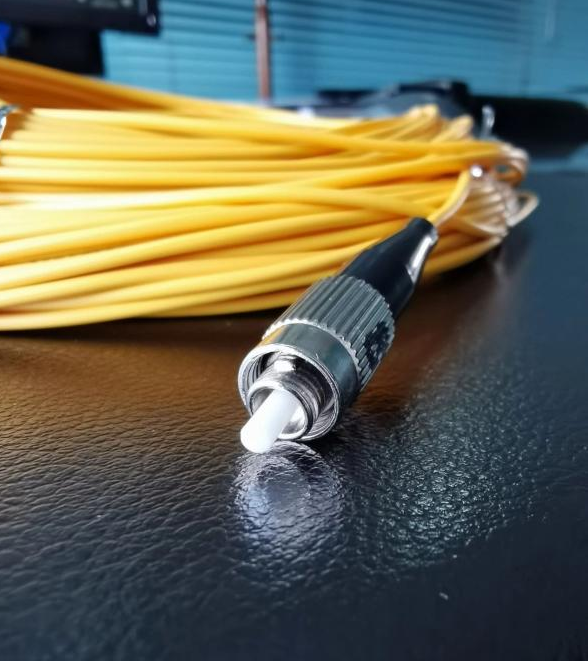
Round-head fiber optic jumper FC/PC
It can be judged that it is a single-mode fiber jumper by the yellow color, and it is known by the connector that it is a round-head fiber jumper FC/PC. The following is a small-square-head fiber optic jumper LC/PC.
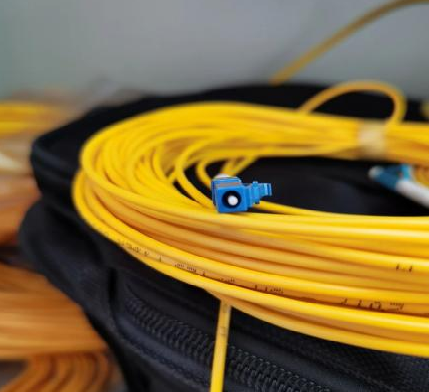
Small-square-head LC/PC
You can see the production date, manufacturer and fiber length through the numbers on the fiber jumper.
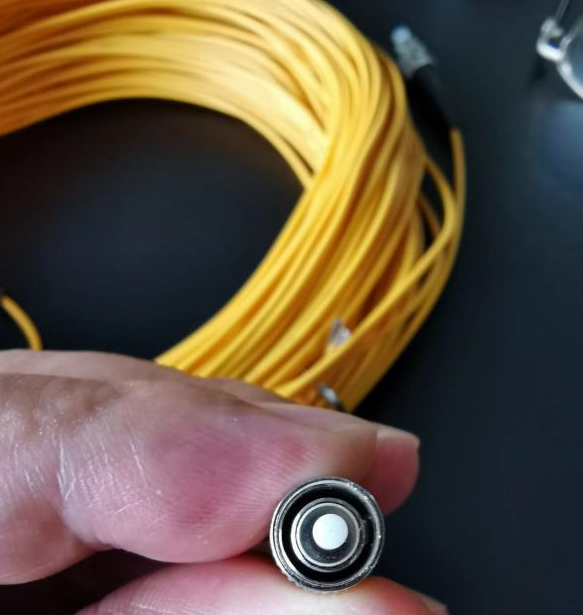
Pigtail head
Pick up the head of the pigtail to see what’s inside.
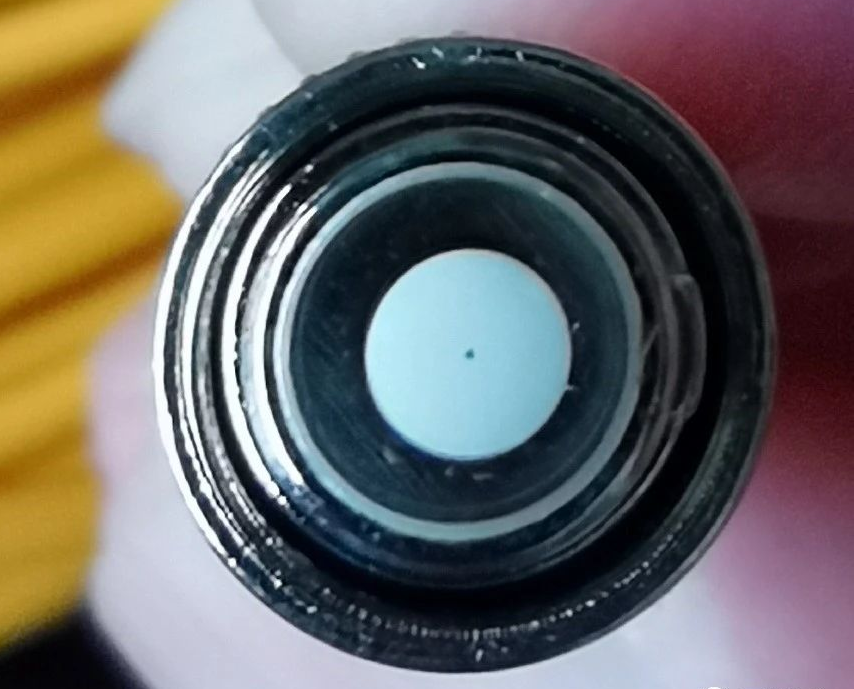
Details of pigtail head
If you look carefully, you will find a black dot in the middle, which is located in the center of the ceramic plug connector. If you don’t look carefully, you might not find this small spot, because this is an optical fiber, a transparent optical fiber in a white ceramic ferrule, and you can only see this in the case of right light and right angle.
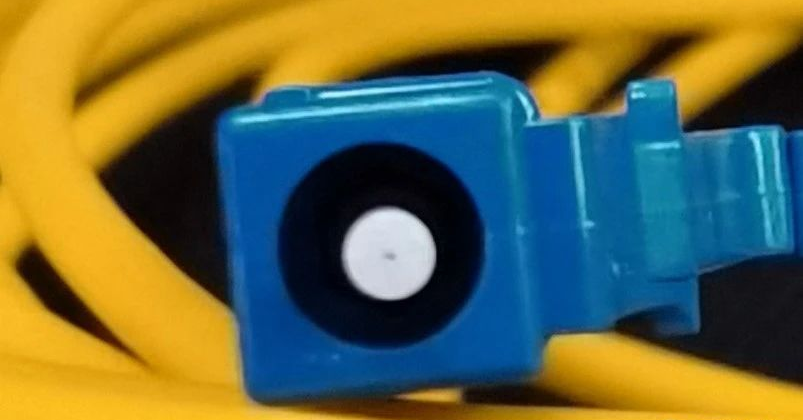
LC port
If you check the port of LC, you will also find a small black spot. You will only be able to see it from a right angle. This is fiber optics, the critical channel of our communications, through which light signals travel.
The production process of optical fiber jumper
FiberMall will show you the production process of the optical jumper. According to the length we need, FiberMall cuts the appropriate length from coils of yellow fiber optic cable.
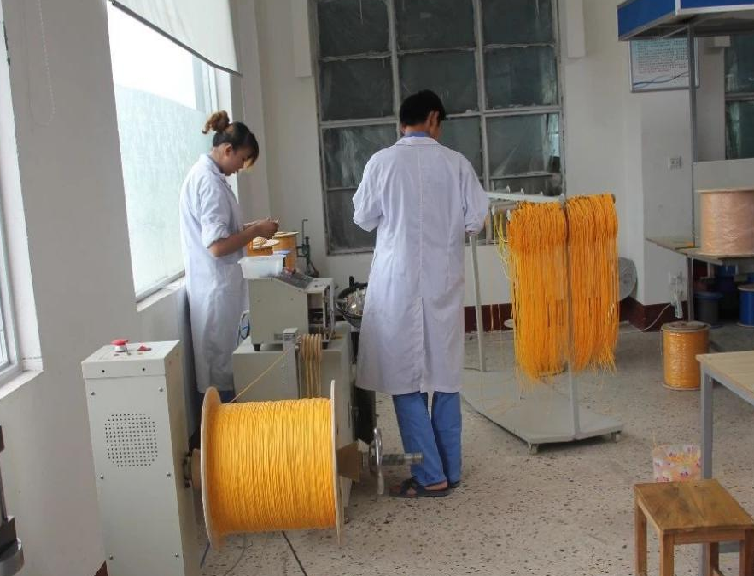
Assemble the ceramic ferrule
Peel off a small section and assemble the ceramic ferrule.
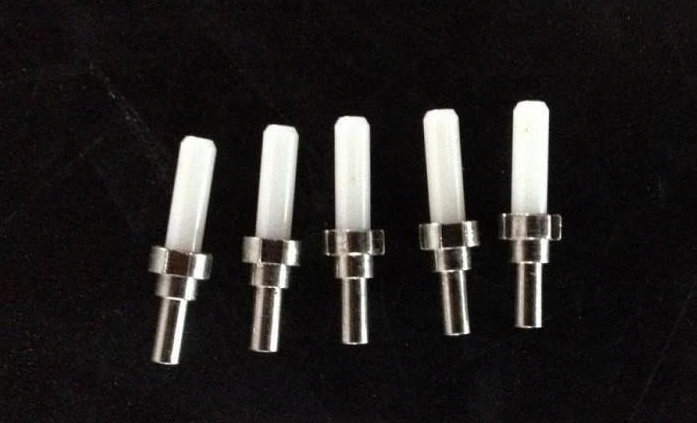
Ceramic ferrule
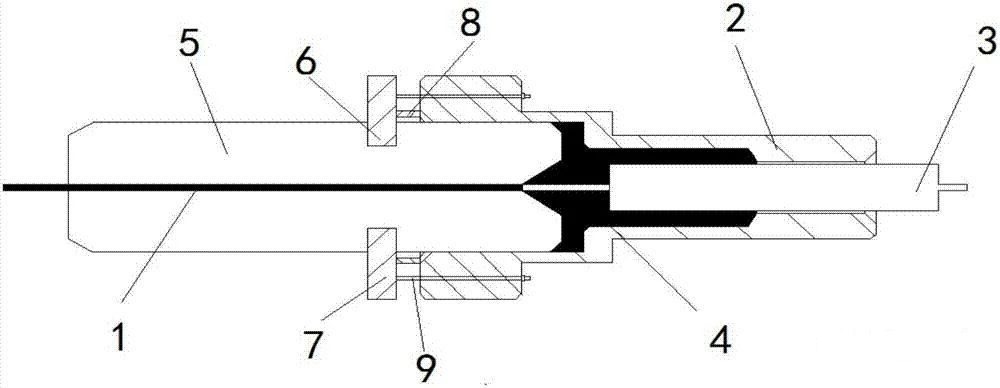
Structural diagram of ferrule
The structure of the ferrule is shown in the figure above, and the white one is a ceramic ferrule. Workers thread a very thin fiber core into the ceramic core.
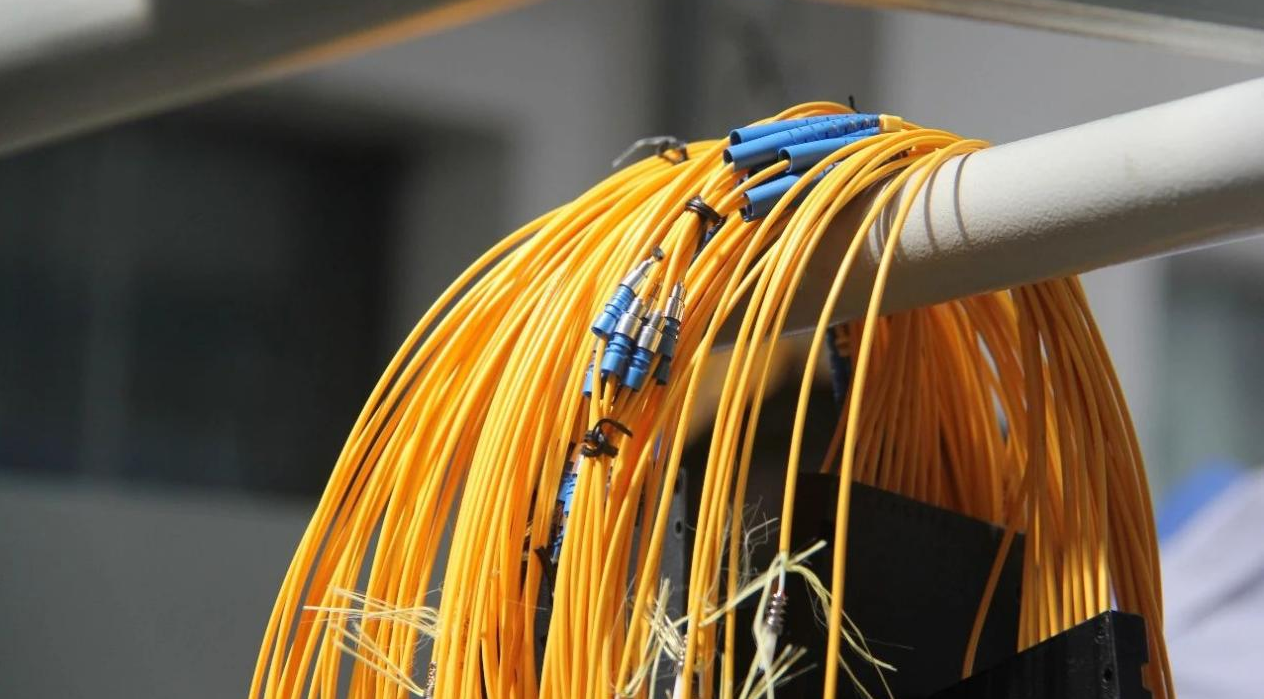 Fiber jumpers after mechanical crimping
Fiber jumpers after mechanical crimping
Assemble the ferrule, spring, sheath, etc. for mechanical crimping, and crimp the optical fiber sheath and connector together to maintain a certain tensile strength. However, the fiber core and the ceramic core are inserted manually, so there will be some deviation between the ceramic core and the fiber core inside. The fiber core will protrude from the end face of the ceramic core or be lower than the end face in some cases. To solve this problem, the crimped pigtail head will be fixed on the grinding machine, using different materials for grinding. The principle is to thicken first and then thin until the optical fiber and ceramic core are in a perfect plane, with good finish and flatness. Then end face inspector will be used to check the grinding condition of the end face to ensure that the ground surface is smooth and flat enough, otherwise it must be re-ground.
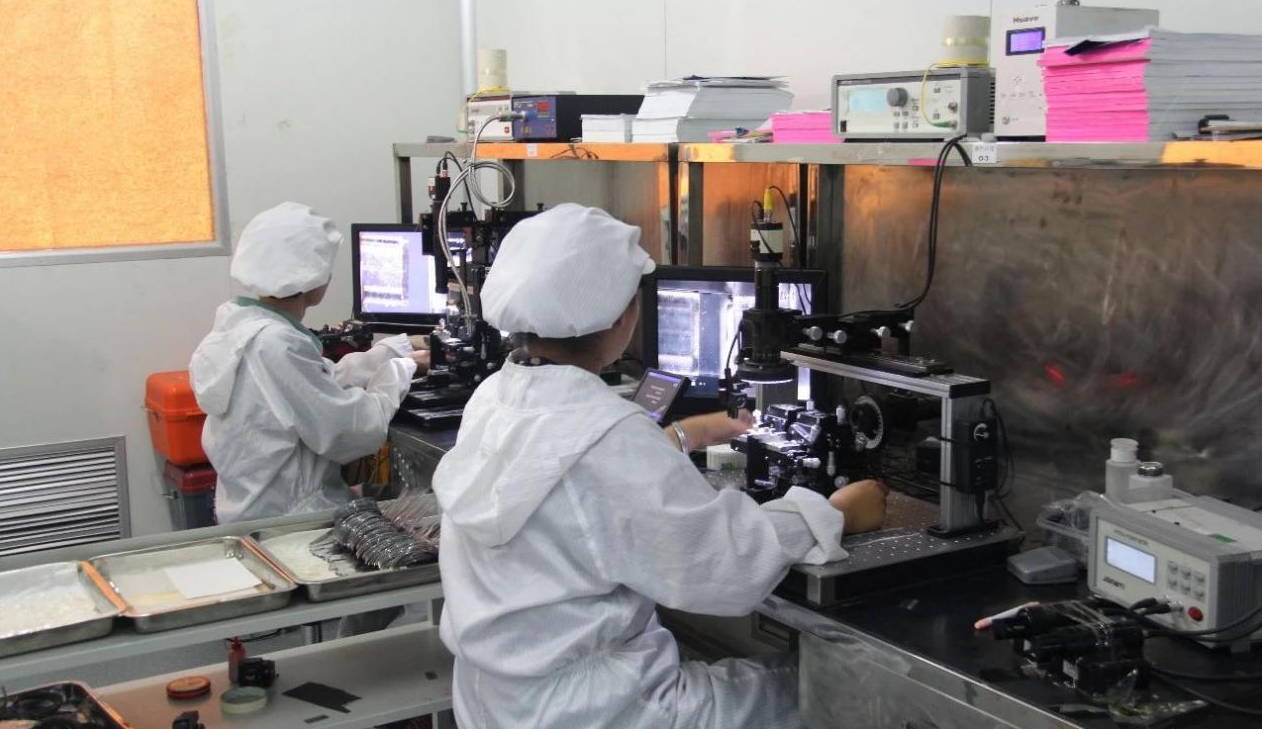
Check after grinding
Sometimes more sophisticated instruments are used for inspection. Then one end of a simple optical jumper is produced.
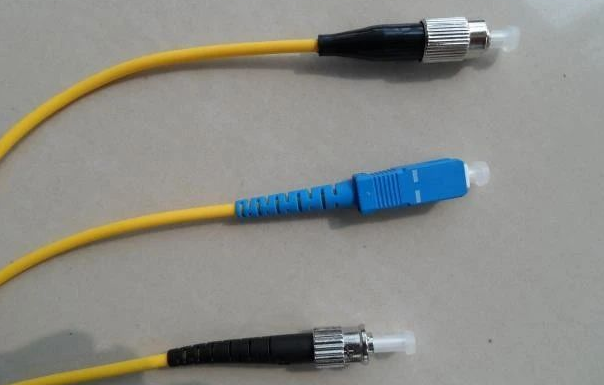
One end of the optical jumper
It is a complete optical jumper after both ends are completed. The jumper looks very thick, but it actually uses optical fiber that is thinner than a hair.
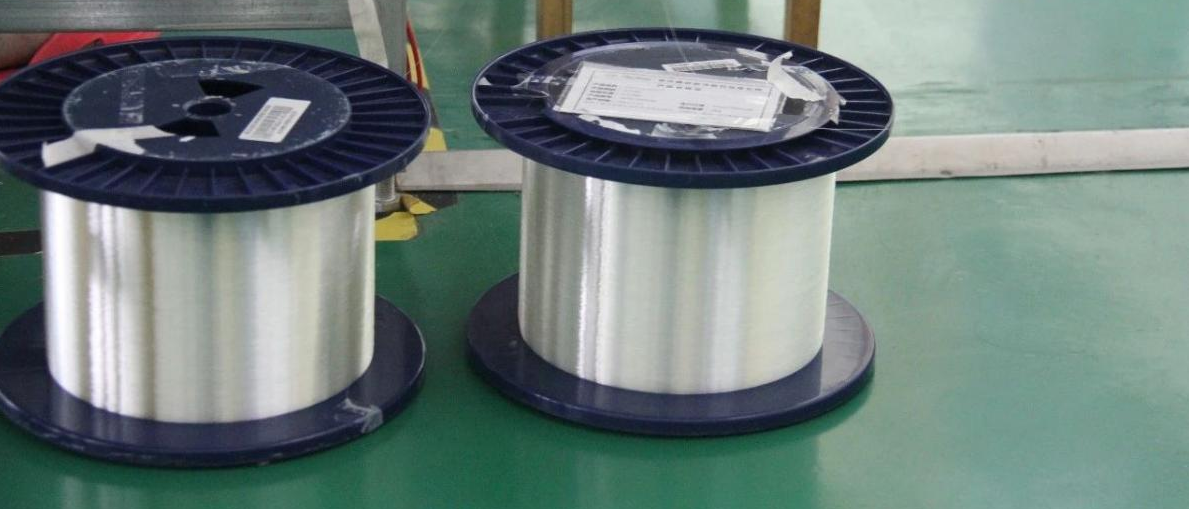
Ultra-fine fiber
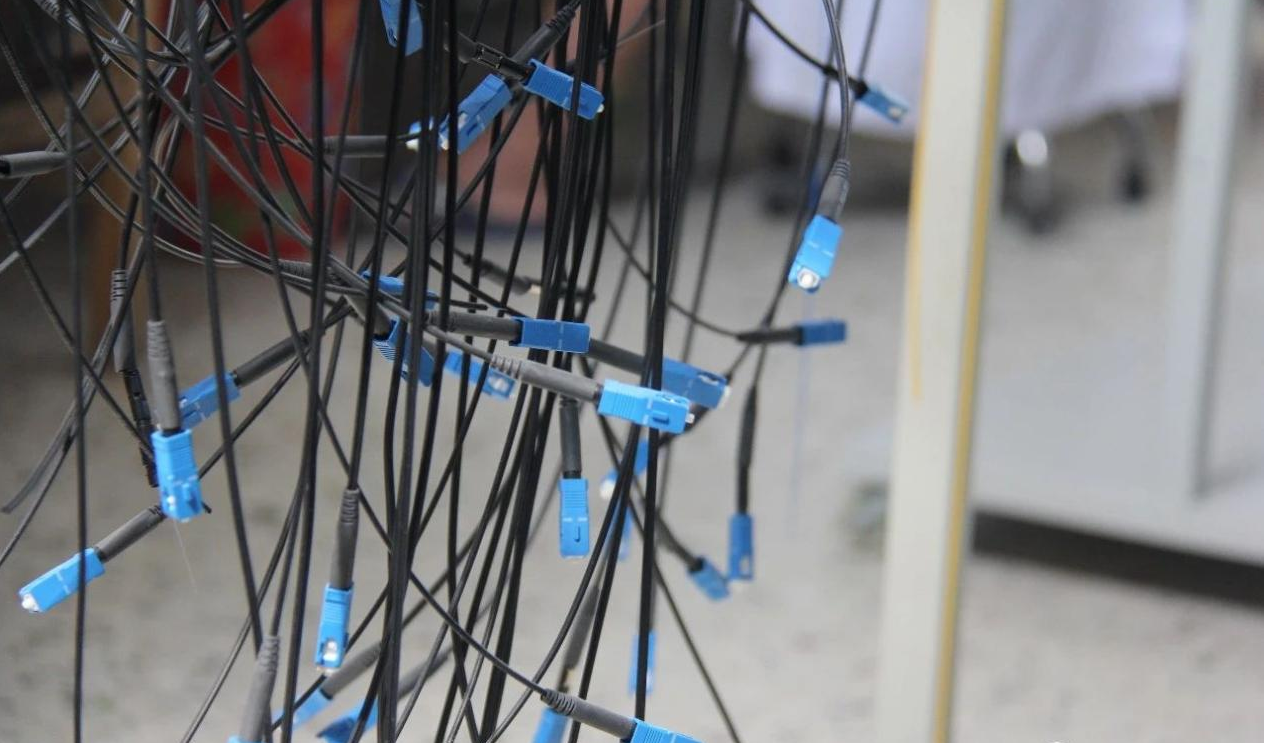
Fiber Jumpers
All the cladding is for protection. There is a coating on the outside of the fiber to ensure light reflection, a loose sheath and an outer plastic sheath. The ceramic ferrules at both ends are to ensure that the fiber core in the middle of the optical fiber is correctly aligned when connected through the flange.
The connector of the optical fiber jumper is guided by the ceramic core, and then the two cores are aligned with each other. The optical fibers at both ends are tightly connected through the screw connection (round head) or locking connection (with spring in the square head) to realize the transmission of optical signals. Therefore, no matter what kind of connectors, the optical fibers in the middle must be aligned, otherwise will lead to great attenuation.
After seeing the condition of the optical core, we can understand why there should be no dust or scratches on the optical fiber connector. Once there is dust, there will be gaps in the middle, and scratches will easily form light reflections, which will increase return loss. As a result, we need to pay special attention to protecting the end face of the jumper during use and keep it away from scratches and dust.
Table of Contents
ToggleRelated Products:
-
 3m (10ft) Duplex OM4 Multimode LC UPC to LC UPC PVC (OFNR) Fiber Optic Cable
$3.90
3m (10ft) Duplex OM4 Multimode LC UPC to LC UPC PVC (OFNR) Fiber Optic Cable
$3.90
-
 3m (10ft) Duplex OS2 Single Mode LC UPC to LC UPC OFNP Fiber Optic Cable
$3.10
3m (10ft) Duplex OS2 Single Mode LC UPC to LC UPC OFNP Fiber Optic Cable
$3.10
-
 3m (10ft) Simplex OS2 Single Mode LC UPC to FC UPC PVC (OFNR) Fiber Optic Cable
$1.40
3m (10ft) Simplex OS2 Single Mode LC UPC to FC UPC PVC (OFNR) Fiber Optic Cable
$1.40
-
 1m (3ft) Duplex OM3 Multimode SC UPC to SC UPC OFNP Fiber Optic Cable
$3.00
1m (3ft) Duplex OM3 Multimode SC UPC to SC UPC OFNP Fiber Optic Cable
$3.00
-
 1m (3ft) Duplex OM3 Multimode LC UPC to SC UPC OFNP Fiber Optic Cable
$3.00
1m (3ft) Duplex OM3 Multimode LC UPC to SC UPC OFNP Fiber Optic Cable
$3.00
-
 1m (3ft) Duplex OM3 Multimode LC UPC to LC UPC OFNP Fiber Optic Cable
$3.00
1m (3ft) Duplex OM3 Multimode LC UPC to LC UPC OFNP Fiber Optic Cable
$3.00
-
 1m (3ft) Duplex OM5 Multimode SC UPC to SC UPC LSZH Fiber Optic Cable
$3.40
1m (3ft) Duplex OM5 Multimode SC UPC to SC UPC LSZH Fiber Optic Cable
$3.40
-
 1m (3ft) Duplex OS2 Single Mode SC UPC to SC UPC OFNP Fiber Optic Cable
$2.50
1m (3ft) Duplex OS2 Single Mode SC UPC to SC UPC OFNP Fiber Optic Cable
$2.50
-
 1m (3ft) Duplex OS2 Single Mode LC UPC to SC UPC OFNP Fiber Optic Cable
$2.50
1m (3ft) Duplex OS2 Single Mode LC UPC to SC UPC OFNP Fiber Optic Cable
$2.50
-
 1m (3ft) Duplex OS2 Single Mode LC UPC to LC UPC OFNP Fiber Optic Cable
$2.50
1m (3ft) Duplex OS2 Single Mode LC UPC to LC UPC OFNP Fiber Optic Cable
$2.50
-
 1m (3ft) Duplex OS2 Single Mode SC UPC to SC UPC LSZH Fiber Optic Cable
$2.70
1m (3ft) Duplex OS2 Single Mode SC UPC to SC UPC LSZH Fiber Optic Cable
$2.70
-
 1m (3ft) Duplex OM4 Multimode LC UPC to FC UPC PVC (OFNR) Fiber Optic Cable
$2.90
1m (3ft) Duplex OM4 Multimode LC UPC to FC UPC PVC (OFNR) Fiber Optic Cable
$2.90
-
 1m (3ft) Duplex OM4 Multimode SC UPC to ST UPC PVC (OFNR) Fiber Optic Cable
$3.00
1m (3ft) Duplex OM4 Multimode SC UPC to ST UPC PVC (OFNR) Fiber Optic Cable
$3.00
-
 1m (3ft) Duplex OM4 Multimode SC UPC to SC UPC PVC (OFNR) Fiber Optic Cable
$3.00
1m (3ft) Duplex OM4 Multimode SC UPC to SC UPC PVC (OFNR) Fiber Optic Cable
$3.00

